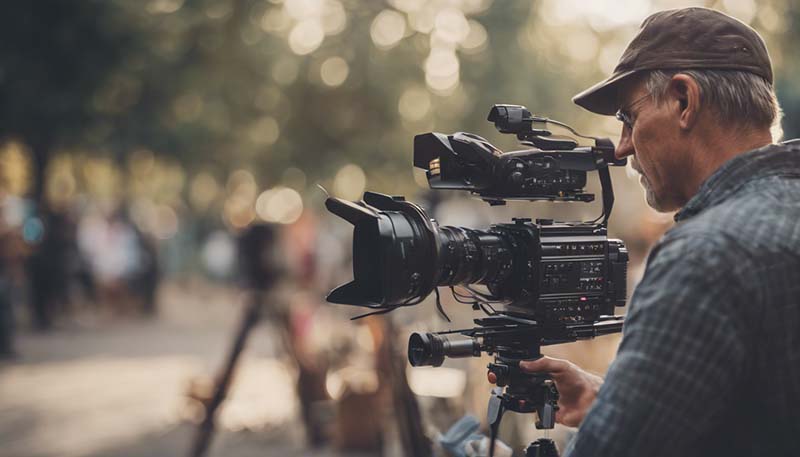The Art of Film Directing: A Look at How Directors Craft the Cinematic Experienc
The Art of Film Directing: A Look at How Directors Craft the Cinematic Experience
Film directing is the orchestration of the various elements of a film's production into a cohesive, expressive whole. It is the director's vision that ultimately shapes the film, influencing everything from the script to the performances, the cinematography to the sound design. This article delves into the multifaceted role of the director and the myriad ways they craft the cinematic experience.
Vision and Pre-Production
The journey of a film begins with the director's vision, which is often the spark that initiates the entire project. This vision is refined during pre-production, a phase that involves script development, casting, location scouting, and designing the look and feel of the film. Directors work closely with screenwriters to ensure the script aligns with their creative goals.
Script Analysis and Adaptation
Directors must interpret the script, identifying the core themes, character arcs, and narrative structure. This involves breaking down the screenplay into scenes and sequences, and sometimes making changes to enhance the story's cinematic potential. If the film is an adaptation, directors must decide how to translate the source material—be it a book, play, or even a true story—into a visual medium.
Casting and Character Development
Casting is a critical aspect of pre-production. Directors often collaborate with casting directors to find actors who can embody the characters. This process involves auditions, callbacks, and chemistry reads to ensure that the actors chosen can bring the director's vision to life.
Advertisement
Visual Storytelling
The visual aspect of a film is where the director's creative prowess truly shines. Directors work with cinematographers, production designers, and costume designers to create a visual language that tells the story.
Cinematography
Cinematography is the art of capturing the film's images. Directors and cinematographers collaborate on decisions about camera placement, movement, and lens selection. They also consider the film's lighting, color palette, and framing to evoke specific emotions and to guide the audience's attention.
Composition and Staging
Composition involves arranging elements within the frame to create a visually compelling image. Directors use techniques such as the rule of thirds, leading lines, and depth of field to direct the viewer's eye and to emphasize certain aspects of the scene. Staging, on the other hand, refers to the positioning and movement of actors within the frame, which must be carefully choreographed to support the narrative and emotional beats of the scene.
Performance and Collaboration
Directing actors is one of the most challenging and rewarding aspects of a director's job. Directors must guide their actors to deliver performances that are authentic, nuanced, and aligned with the director's vision.
Working with Actors
Directors work closely with actors to develop their characters, understanding their motivations, backstories, and emotional arcs. This involves discussions, rehearsals, and sometimes improvisation to explore different approaches to a scene. Directors must be adept at giving clear, constructive feedback and at creating an environment where actors feel supported and free to take risks.
Collaboration with Filmmaking Teams
Filmmaking is a collaborative process, and directors must work effectively with a variety of departments, including editing, sound, and visual effects. Communication and trust are key, as the director must be able to convey their vision and inspire the team to bring their best work to the project.
Post-Production and Finalizing the Film
Once shooting is complete, the director turns their attention to post-production, where the film is refined and finalized. This phase includes editing, sound design, music composition, and the addition of visual effects.
Editing
During editing, the director works with the editor to shape the film's narrative flow and pacing. This involves selecting takes, trimming scenes, and arranging them in a sequence that tells the story in the most compelling way. The director's creative decisions in editing can significantly impact the final film, often revealing the story in a new light.

Sound and Music
The sound design and music score are integral to the film's emotional impact. Directors work with sound designers and composers to create a soundscape that enhances the storytelling. This can involve selecting music, designing sound effects, and recording and mixing dialogue to ensure that the audio supports the narrative and emotional cues of the film.
Conclusion
The role of a film director is complex and multifaceted, requiring a deep understanding of storytelling, visual composition, and human performance. By guiding the collaborative efforts of a vast team of creative professionals, directors bring their unique visions to life, crafting the cinematic experiences that captivate and inspire audiences around the world.
Further Reading:
- Books on film directing techniques and theory.
- Interviews with renowned directors for insight into their creative processes.
- Case studies of specific films to understand how directors approached various challenges.